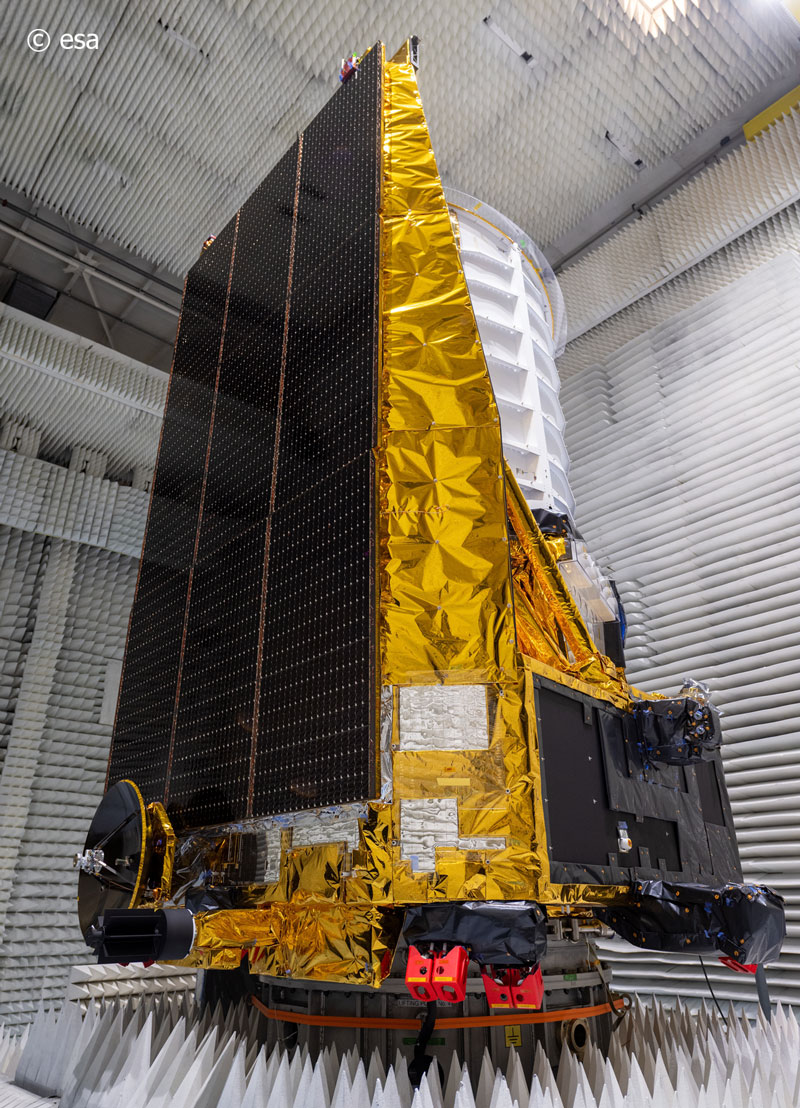ESA’s Euclid spacecraft lifted off on a SpaceX Falcon 9 rocket from Cape Canaveral Space Force Station in Florida, USA, at 17:12 CEST on 1st July 2023. The successful launch marks the beginning of an ambitious mission to uncover the nature of two mysterious components of our universe: dark matter and dark energy, and to help us answer the fundamental question: what is the universe made of?
Telespazio UK is excited to be working at The European Space Astronomy Centre, (ESAC) near Madrid, Spain on the preparation of data for the Euclid mission archive.
 The Euclid observatory consists of a near-infrared camera and spectrometer and a camera working at visible wavelengths. It will conduct a survey, measuring the shapes of billions of galaxies over a third of the sky and out to a distance of 10 billion light years. The gravitational influence of the intervening matter between those galaxies and the telescope will introduce subtle distortions to galaxy shapes. Quantifying this effect along different directions will allow Euclid to map the cosmic distribution of dark matter, which constitutes 85% of all matter in the universe.
The Euclid observatory consists of a near-infrared camera and spectrometer and a camera working at visible wavelengths. It will conduct a survey, measuring the shapes of billions of galaxies over a third of the sky and out to a distance of 10 billion light years. The gravitational influence of the intervening matter between those galaxies and the telescope will introduce subtle distortions to galaxy shapes. Quantifying this effect along different directions will allow Euclid to map the cosmic distribution of dark matter, which constitutes 85% of all matter in the universe.
Using its spectrometer, Euclid will measure the change in wavelength (the redshift) of light emitted by the galaxies. The link between the redshift and the galaxy shapes will provide an estimate of the distances and reveal the acceleration of the expanding universe at different epochs. The observed acceleration is a manifestation of the influence of dark energy. Together, the dark matter and the dark energy constitute 95% of the matter-energy density of the universe.
Richard Saxton, ESAC Service Manager for Telespazio UK, explains how his team is involved in this project and what the biggest challenge has been so far:
How is Telespazio UK involved in this project?
Telespazio UK is the consortium lead in some areas and a consortium member in others. The Telespazio UK team is heavily involved in developing and maintaining the ESA systems used in mission planning processes, rapid visualisation of results and conducting operations, as well as in the essential performance-verification activities conducted shortly after launch (that is, ongoing now).
What has been the biggest challenge so far?
Telespazio UK Team Leader - Uplink Systems, Richard Carr, said the biggest challenge so far has been managing the constantly changing priorities as new problems are inevitably discovered in preparation for and shortly after the launch of a unique and cutting-edge spacecraft.
Finally, both Richards, can you tell us about the key scientific objectives of the Euclid mission?
Euclid’s objective is to enable us to check our understanding of the universe. It will investigate the properties of dark energy and the large-scale distribution of dark matter, look at the history of the expansion of the universe and test whether general relativity is universally applicable.

